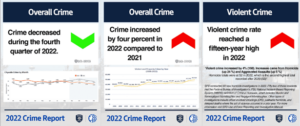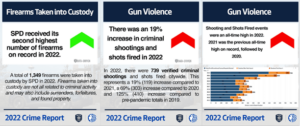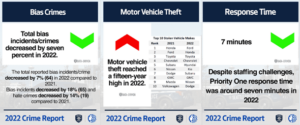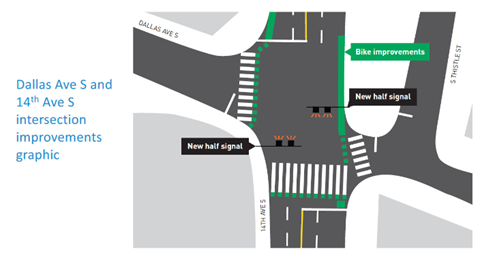Content
Spokane Street (Low) Bridge Update
SDOT announced the re-opening of the Spokane Street (low) Bridge at 2 p.m. today, following successful repairs.
SDOT’supdate from earlier this week notes, “While the eastern bridge span runs with one cylinder, opening and closing the bridge for passing ships will take about 10-15 minutes longer than usual.” This will continue for a substantial part of 2023, as previously planned refurbishment of the four bridge cylinders proceeds; SDOT expects to have a better estimate in a few weeks. My office has asked SDOT about providing notice for when bridge closures are estimated to end.
SDOT also announced they will remove the temporary bike detour on 1st Avenue South on Saturday, January 14th, keep the temporary protected bike lane along West Marginal Way SW, and continue conversations with nearby businesses and community members about a protected bike lane in this location.
Below is background on the work to repair the bridge.
Preparations to overhaul all four of the Spokane Street (low) Bridge hydraulic turning cylinders (including the damaged one) began several months back as part of this comprehensive repair and maintenance effort. When the unexpected damage to the cylinder occurred during last month’s ice storm, the planning work SDOT had already completed allowed them to quickly jump into developing a response plan and likely allow for the completion of repairs sooner than if they had been starting from scratch.

The graphic above shows the three main components that lift the bridge, turn the cylinders, and rotate the bridge span to allow it to open and close.
On Sunday, SDOT removed a damaged 15,000 pound turn cylinder to transport it to repair. Below is detail about the turn cylinder that crews removed and will have refurbished.

SDOT’s Roadways and Structures staff have been in the bridge daily since December 23rd. I sincerely appreciate the work they have been doing.
While the cylinder is being refurbished, SDOT will operate the easter span of the bridge on the remaining single turning cylinder (both on the western span are in place). Engineers have reprogrammed the computer system that controls the bridge equipment.
On Wednesday, SDOT carried out repairs to valves on the hydraulic pumps; during testing on Monday they found that 3 of the 4 values were broken. SDOT then moved to 24-hour testing, to assess the operations of the bridge with this work.
SDOT quickly added a temporary bike lane on 1st Avenue South and West Marginal Way, and has checked the traffic cones three times a day to ensure the bike lane stays well-marked.
The Transportation and Seattle Public Utilities committee meeting on Tuesday, January 17 will include an update briefing from SDOT. Thanks to Committee Chair Councilmember Pedersen for scheduling this.
PSHS Committee Updates

South Park Flooding: I invited City departments to present to the Public Safety and Human Services Committee on Tuesday about response to flooding in South Park resulting from the confluence of an extreme storm, very low pressure, and extreme King Tide, and heavy rain.
Here’s the presentation from the Mayor’s Office, Office of Emergency Management, and the Human Services Department.
49 properties were affected; here is a slide showing the locations affected by flooding:

The Human Services Department is working on the needs of affected residents, including housing, food, transportation and medical support. They are coordinating with community-based organizations who are taking the lead on culturally appropriate and in-language service for impacted communities, in Spanish, Khmer and Vietnamese. They announced that temporary housing vouchers will continue to the end of the month.
Seattle Public Utilities is preparing for another King Tide the last week of January from the 23rd to the 26th. It is predicted to be two feet lower than the December flooding.

Moving toward a long-term solution for climate change related flooding, beyond the infrastructure investments already underway to address storm and wastewater flooding in South Park, will require work with other agencies for planning and funding.
At the presentation SPU highlighted the interest of the Army Corps of Engineers in helping to address this need. Other potential funding could come from FEMA and the King County Flood Control District.
In August I took a tour that SPU hosted with Senator Murray and Rep. Smith’s office to support the Army Corp of Engineers funding for a feasibility study to address river topping and searise related flooding; thanks to SPU for your work on this, and for taking Rep. Jayapal’s team on a separate tour.

An after-action report will be developed once operations have concluded.
OIG 2023 Work Plan – We were also joined in the PSHS Committee by Inspector General Judge who presented the Office the Inspector General (OIG) 2023 Work Plan.

The Office of the Inspector General is one of the three civilian-led police accountability agencies, joined by the Office of Police Accountability and the Community Polie Commission.
Each of the three civilian-led agencies have a specific role in police accountability. The City of Seattle Office of Inspector General (OIG) helps to “ensure the fairness and integrity of the police system as a whole in its delivery of law enforcement services by providing civilian auditing of the management, practices, and policies of the [Seattle Police Department (SPD) and Office of Police Accountability (OPA)] and oversee ongoing fidelity to organizational reforms implemented pursuant to the goals of the 2012 federal Consent Decree in United States of America v. City of Seattle, 12 Civ. 1282(JLR), as noted in section 3.29.010B of Ordinance 125315, the 2017 police accountability legislation.
One of the key updates, in line with the mention of the Consent Decree above, is the work to begin carrying out monitoring assessments of SPD. Since the Consent Decree, the Police Monitor has conducted these reports. The Monitor’s Comprehensive Assessment of May 2022 combined use of force, crisis intervention, and stops and detentions. Earlier assessments were mostly for one subject area.
Before OIG can be approved by the Court that oversees the Consent Decree to take over this work, OIG must develop a methodology that will also need to be approved. The City, including SPD and OIG, are working with the Monitor and DOJ to address remaining, important work that the DOJ and the City agree needs to continue. They are also working on preparing OIG to take on the role of the Monitor and to continue provide robust oversight in the future–even after the Consent Decree ends.
Last year during the Monitor’s Preliminary Assessment of the City’s performance under the Consent Decree, I sent the attached letter as my input.

Here’s the OIG presentation.
Regional Policy Committee Vote Supporting Behavioral Health Levy
Though I am only an alternate to the Regional Policy Committee (RPC), I appreciated the opportunity to participate this week on this critical discussion and action. I thank you King County Executive Constantine, bill sponsor Councilmember Zahilay, and DCHS Director Flor and staff for their work to bring forward this ballot measure.
The proposed levy would support the creation of five new regional crisis care centers distributed throughout the county, with one of the centers solely focused on serving youth; restore mental health residential treatment bed capacity and expand treatment availability and sustainability in King County; and support area behavioral health workforce needs.
If approved by the voters, the nine-year levy (2024-2032) would have an initial levy rate of $0.145 per $1,000 of assessed value in 2024 and generate a total of approximately $1.25 billion in revenues during the nine-year levy period. A $0.145 per $1,000 AV levy would be estimated to cost the owner of a $694,000 home in King County (2022 median home value) approximately $121 for 2024 in property taxes.
This proposal responds to a request of the Seattle City Council in passing a 2021 resolution that I sponsored, requesting that King County and the State of Washington increase services to address behavioral health conditions and uplifting the fact that in Washington, 46% of adults reported symptoms of anxiety or depression, and 30% were unable to get the counseling or therapy they need. More than half of 12 – 17 year-olds who have depression did not receive any care in 2021, according to research by NAMI|Washington.
In a ranking by Mental Health America of low prevalence of mental illness and high access to care in 2020 places Washington forty-sixth out of all states and the District of Columbia
The ordinance putting the behavioral health levy on the ballot lifts up the fact that in the study year:
- 62 percent of adults and 80 percent of youth enrolled in Medicaid having an identified substance use disorder need, and half of adults and over a third of youth with an identified mental health need did not receive treatment.
- People who need mental health residential services must wait an average of 44 days before they are able to be placed in a residential facility
- Position vacancies in agencies that provide mission critical services to this population have doubled.
To place this in a global context, in December I attended an international mental health conference. I was heartened that cities all over the world are recognizing that our people are suffering. I’d like to share parts of our call to action, as follows:
- 300 million people across the world are affected by depression and 1 billion suffer from a mental disorder of some kind. Over 700,000 people commit suicide every year. It is even the fourth most common cause of death among young people between 15 and 29 years old.
- The WHO’s finding is indisputable: during the first year of the pandemic, rates of depression and anxiety disorders increased by 25%.
- Taking care of health doesn’t just mean combating “visible” diseases. Healthcare professionals and the WHO remind us of the fact: health is a complete state of physical, mental and social wellbeing.
- On a global scale, the share of national budgets dedicated to mental health only accounts for 2% of overall healthcare budgets.
- It is here that we have a role to play, by make a top priority of combating inequalities and discrimination, by taking action to create an environment supportive of health and prevention.
This King County levy will next be voted on by the King County Council. That it passed RPC unanimously this week shows strong bipartisan and regional agreement that this levy will provide our residents needed access to care when they are experiencing a behavioral health crisis. Further, that these services will help to bolster our safety net and the supportive housing system by relieving pressure on our housing providers.
Landmarks Ordinance Amendment
On Tuesday, the Council considered Council Bill 120312, which adopted controls and incentives for the First National Bank Building at 566 Denny Way.
The nomination of a landmark is the first step in the historic landmarks process; the second step is approval of the nomination by the Board. The Landmarks Preservation Board voted to approve the nomination, designating this site as a landmark, in 2006.
The third step is for the Board staff and the property owner to negotiate what is called a Controls and Incentives (C&I) agreement. Controls delineate the features of the Landmark that must be maintained. In exchange for doing so, the C&I provides incentives including zoning flexibility, exceptions to building and energy codes, and financial incentives, such as Special Tax Valuation. The Seattle Municipal Code states that: The negotiation period may run for a maximum of seventy-five (75) days from the date of service of the Board’s report on designation on the owner. In this case, although the building owner received approval from the King County Assessor in 2020 for a property valuation reduction of $5 million, the Board reached agreement with the property owner and the owner signed the agreement in December of 2021.
The final step is for the Council to pass legislation approving, denying, or amending the controls that the owner has agreed to follow as well as the incentives that the City is offering. In this case, the bill doing so was voted down 4-0 in committee in December. At Full Council a substitute version was brought forward that, if approved, instead removed the controls and incentives for the designated landmark.
Though Walgreens is not selling the property, there is no development proposal, and the underlying zoning allows for other non-housing uses, such as office or hotel development, opponents of adopting controls and incentives said that controls would limit the capacity for development for housing. I voted with my Council colleagues in 2017 to significantly increase the zoning capacity in this area (Seattle Mixed-Uptown 160). This zoning provides incentives to preserve landmarks, including increase FAR (floor area ratio) for projects that preserve a landmark on-site, and provisions that allow for transfer of development rights (TDR) and the transfer of development potential (TDP) from designated landmarks to other sites.
I proposed an amendment to meet both the goals of increasing the potential for housing while also supporting landmarking by removing the controls for the parking lot while retaining the controls and incentives for the building. This approach would allow for the use of the landmark building FAR bonus or transferring TDR to other sites.
The Council adopted this amendment. With passage of the amendment, development can take place in the parking lot area; Councilmember Lewis proposed an additional amendment that removed the signpost, drive through, breezeway. The Council unanimously adopted the bill as amended.
In developing the amendment, at my request Central Staff examined three different options for development, as follows:
The site is 25,920 square feet. The parking area is approximately 11,700 square feet. The building is approximately 8,055 square feet above grade. The site is zoned Seattle Mixed-Uptown 160 – a mixed-use zone with height limits up to 160 feet. 7 FAR are allowed for residential or non-residential projects.
In the Seattle Mixed-Uptown zone, there is an incentive of 1 FAR for development that preserves a landmark on site. Another 0.5 FAR is provided for a project that includes at least 10 large units (>900 square feet, 3+ bedrooms). Consequently, the most residential development that could occur would be the result of development on the lot (and potentially above the bank building) that preserves the building as a landmark and provides 10 large units.
Here are the three different development alternatives:
- If the entire site were to be redeveloped, the maximum amount of development that could be built would be approximately 275 units or 181,000 square feet of non-residential space.
- If the entire site were to be landmarked and development rights were transferred, that would facilitate approximately 250 units or 173,000 square feet of non-residential space on other sites in the Uptown Urban Center (the building area is removed from the floor area that can be transferred, however the building area is retained).
- If the parking area were to be removed from the designation and development were allowed on the parking lot while retaining the landmarked building, the maximum amount of development that could be built would be approximately 310 units or 207,000 square feet of nonresidential space, plus the area within the existing building. Note that this would be hard to fit on the lot without building above the bank building.
A larger building could be built on the lot under alternatives 1 or 3 if an arts or school facility were incorporated into the project.
This Central Staff estimate is based on an average of 700 square feet sized unit, nearly the City average of 711 square feet per unit. It also includes the Uptown family size bonus which requires at least 10 units with three bedrooms and more than 900 square feet.
Option 3 has the highest estimate for any potential housing development even compared to the scenario where there are no controls placed on the building (Option 1). It’s worth noting that is not unusual for developers to undertake a development that preserves the façade of the building but builds above it.
The two amendments result in over 13,000 square feet of space with neither controls nor incentives, of 25,920 total square feet.
During public comment at the City Council meeting, there were statements that the lot would be too small for this level of development. There are examples in Seattle over the last decade of development on lots smaller than this:
- The 24-story (188 unit) Martin Apartments at 2105 5th Avenue (by Lenora) was built in 2012 on a 12,720 square foot lot which was a parking lot next to the Cinerama
- The building where Caffe D’arte was located on 2nd and Steward was torn down and replaced with a 40-story condo tower with 264 units on a 8,358 square foot lot (called the Emerald at 121 Stewart Street)
- A developer has a proposal for a 14-story building on the 6,272 square foot site of the landmarked Hahn building at 103 Pike Street
- Two towers on the same block as Town Hall have a smaller floorplate – approximately 9,000 square feet
- Right across the street from the Walgreens, 600 Wall Street, there is a 40-story tower that was built on a 10,665 square foot lot
I believe this amendment is a good compromise to balance historic preservation with enhancing capacity for potential housing development.
The Central Staff memo from the December 5 committee meeting includes useful background on the landmarking process.
Fire Department Ride-Along for District 1 Stations 37 and 26
In March 2020, Chief Scoggins championed the safety of District 1 with a decision to place a ladder truck for the peninsula at Fire Station 37 in High Point and a medic unit at Fire Station 26 in South Park. I proudly sponsored a budget action to sustain these services and am grateful to my Council colleagues for passing the legislation and reducing response times in West Seattle by life-saving minutes. Readers of the newsletter read regular updates throughout the budget process.
This week, Councilmember Teresa Mosqueda and I accepted an invitation from Chief Scoggins to meet the brave men and women at these stations and see them in action on a visit to both stations and a ride-along in the Medic Unit and Fire Station 26 to respond to a medical emergency in progress.

I learned so much about the infrastructure of the stations and how the work done there helps our SFD medics and firefighters stay healthy and supported on their long shifts, about the bonds they build, and about the passions that drew them to commit to providing these life-saving services.
For instance, providing the funding to maintain the presence of the ladder truck and the aid unit is only part of the story of what it takes to maintain these life-saving services. We learned about how the department addressed the space constraints of having a greater number of personnel at stations that are staffed 24 hours a day; 7 days a week. Fire Fighters have sleeping quarters on location, in the case of these two stations, closets and gym exercise area had to be converted into sleeping quarters for the additional personnel that staff the ladder truck and the aid unit.

I am grateful to have taken the opportunity to hear from them and thank them in person. Thank you to SFD for meeting with me yesterday and giving me a close-up view and hands-on demonstrations to just some of what your work entails.
 After all, I’ll be looking for a new job next year!
After all, I’ll be looking for a new job next year!
January is Human Trafficking Awareness Month Proclamation

I brought to the Seattle City Council a proclamation declaring the month of January as “Human Trafficking Awareness Month,” and emphasizing our collective commitment to protect and empower survivors of human trafficking. Mayor Harrell joined the City Council in support.
Human trafficking can affect anyone, regardless of race, religion, occupation, educational level, culture, or sexual orientation. Native Americans, people of color, LGBTQIA+ individuals, immigrants and refugees, and those made vulnerable through socioeconomic barriers, homelessness, and disability are disproportionately affected.
In 2010 President Obama first proclaimed the equality and freedom inherent to all people, to advocate for legislation and protections for survivors, to educate leaders, and to encourage public awareness and action against various forms of human trafficking;
The proclamation further notes “the City of Seattle is striving to become a place where human trafficking does not exist, where people have opportunities available to them so as not to fall into financial vulnerability, and where all people are treated as fully human and worthy of fair pay, safe working conditions, and freedom from human rights violation”, and
A recital references “the Sex Buyers Intervention Program (Johns School), facilitated by the Seattle Municipal Court and the Seattle Human Services Department, aims to reduce the demand for commercial sex by educating men arrested for soliciting sex about the reality of prostitution”
MLK Day Seattle
For forty years Seattle and King County residents have had a rally, march, internships, workshops, youth led programming and a job fair to honor the legacy and the mission of Reverend Dr. Martin Luther King Jr.
The March and Rally are this Monday, January 16th! Like every year before,
Youth Event and Workshops are happening leading up to the event. Find out more aboutwhat is happening next here
Also, there’s a City of Seattle MLK Unity celebration on Monday at 10 a.m., tune in here www.seattlechannel.org/watch-live
Thanks to Seattle Office for Civil Rights for coordinating. We’ll hear from:
- Mayor Bruce Harrell
- City Councilmember Tammy Morales
- Seattle Office for Civil Rights Director Derrick Wheeler-Smith
- Josephine Howell, vocalist















































 After all, I’ll be looking for a new job next year!
After all, I’ll be looking for a new job next year!










